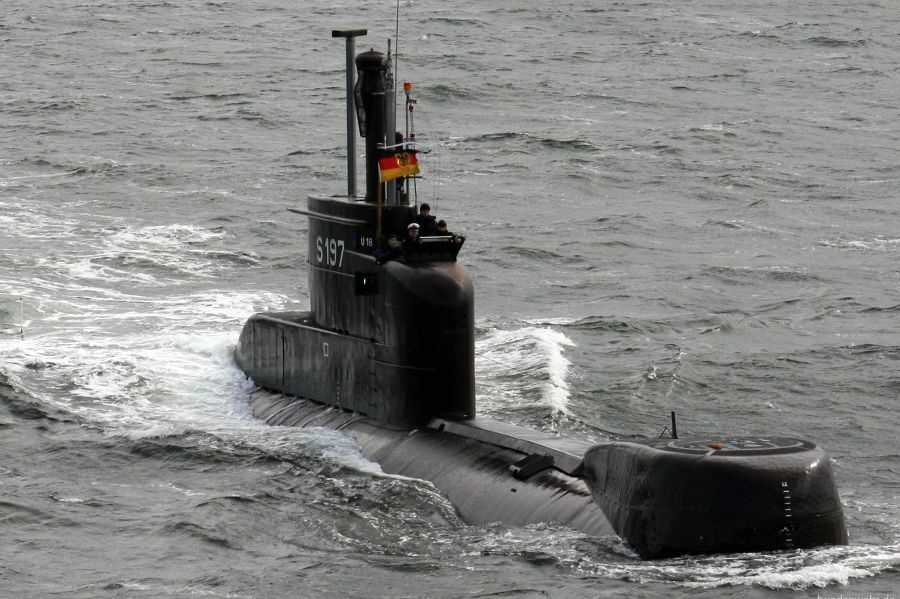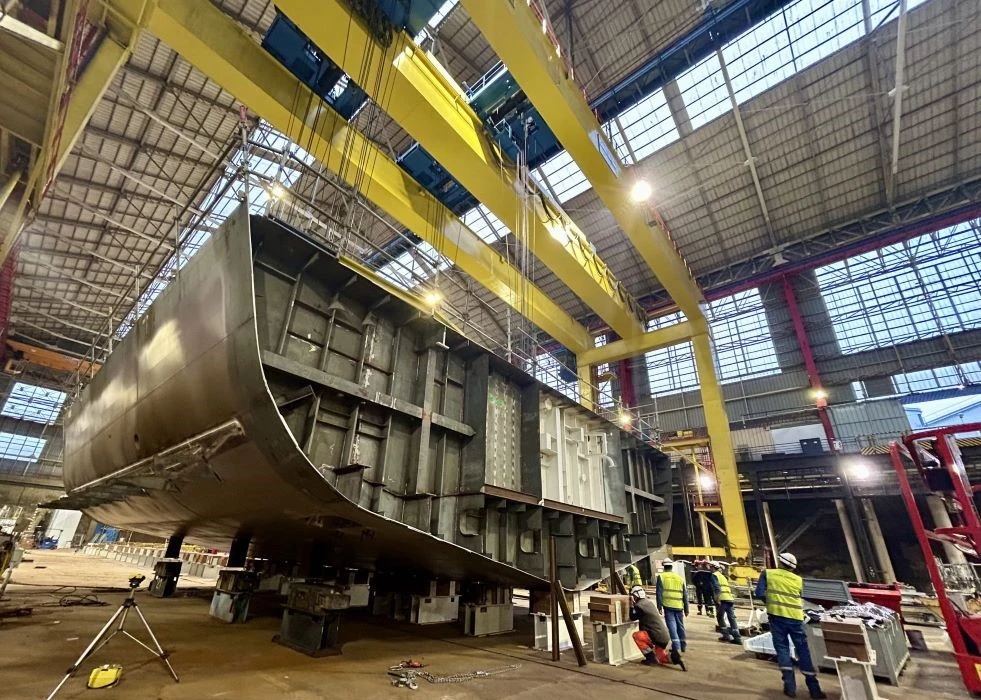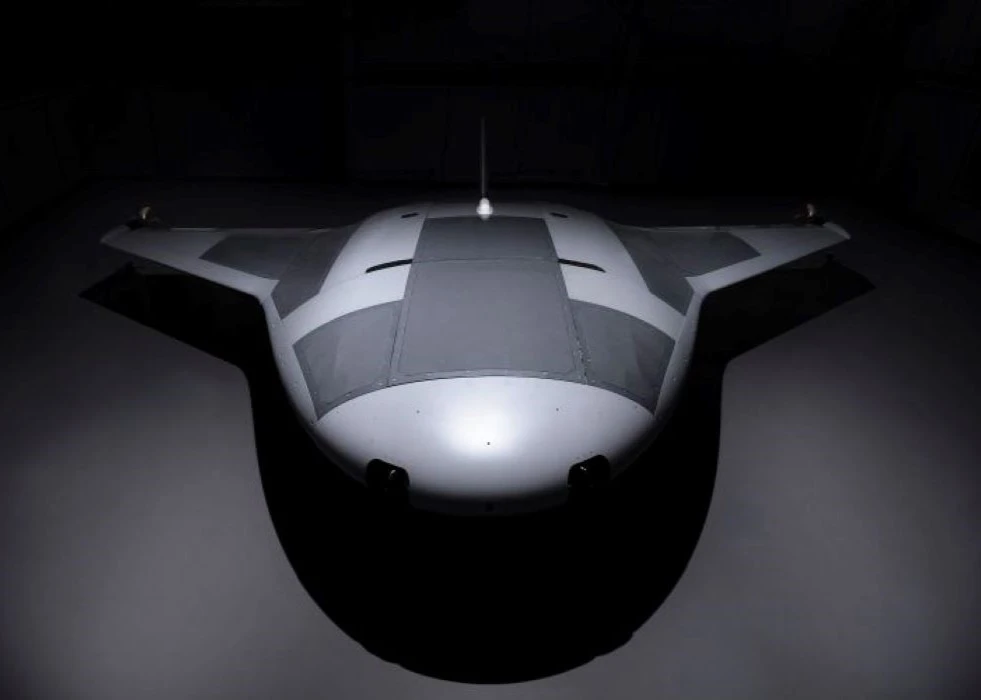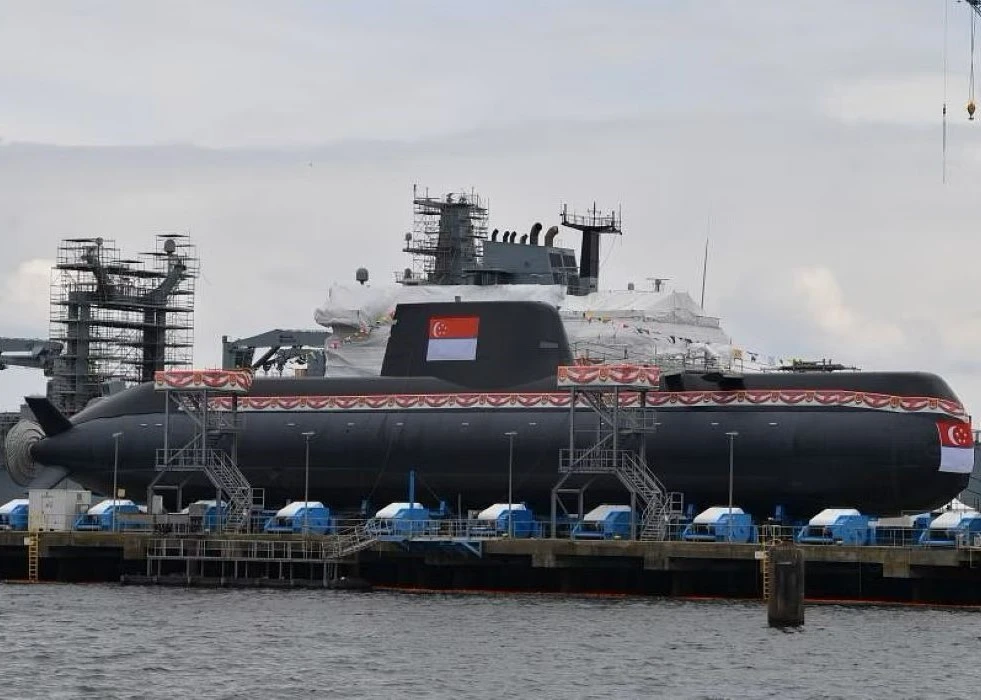CHAPTER III
LIGHT DISPLACEMENT SUBMARINES
OPERATION TYPES
FOREIGN SUBMARINES PATROLLING IN THE REGION
AND
ANTI-SUBMARINE CAPABILITIES
Midget Submarines
The idea of a vessel capable of attacking an enemy ship from below the water surface was tested operationally in the American Civil War for the first time. However, the successful activities of the first submarines in the modern sense were experienced during the First World War. Vehicles with very low displacement, which can be considered a subset of the submarine class and operated by one or more crews, are referred to as Pocket or Midget Submarine.
The first examples of platforms were introduced in Italy in 1915. During the interwar period, various designs were developed. However, the main breakdown in the said class was experienced during the Second World War. Before the war, Japan carried out the first serious studies in this category, followed by Italy. The United Kingdom and Germany developed platforms in the same class during the Second World War.
Midget submarines offer new opportunities with ease of production, low cost and reduced crew necessity. The small size factor makes detection difficult. However, this brings some problems with it when combined with low displacement. Low displacement and size factors limit the offshore capabilities of the vessels. In addition, the operational range of pocket submarines is relatively lower because of the limited energy capacity storage. Vessels offer only limited patrol opportunities in coastal waters for these reasons. The general usage purposes of the users were mainly focused on the protection and defence of ports, bases, and critical infrastructures and meeting the requirement of a force that can be shifted from one region to the other at sea. In addition, operations where platforms were used for offensive or sabotage purposes, where a return of crew or vessel was seen as a low probability, were also recorded.
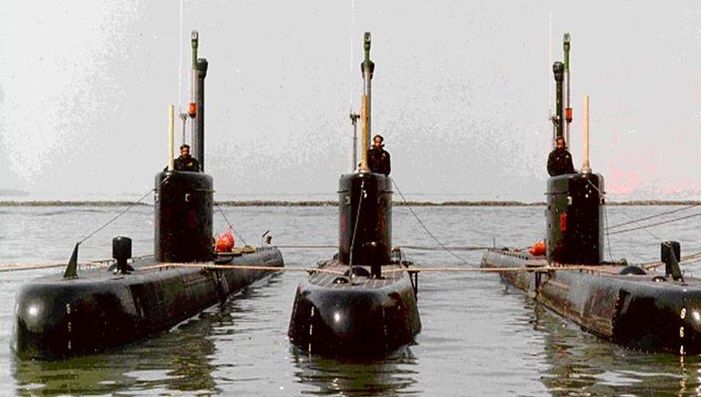
Low Displacement Submarines
The size and displacement of submarines, which were successfully used for the first time during the military operations in the First World War, also increased during the Second World War. It is known that the German Navy carried out long patrol missions in the Atlantic and the U.S. Navy in the Pacific Ocean. The total displacement, under 300 tons in the first period of the First World War, forced the 2,000 tons level at the end of the Second World War.
Germany remained passive in this area for a while due to agreements that completely banned submarine construction activities after the war. Restrictions were relaxed after West Germany joined NATO in 1954. The country, which has an essential place in the history of submarines, was first allowed to construct 12 coastal submarines with less than 350 tons displaced. Studies have been initiated on the requirement for platforms to serve in the Baltic Sea. Following this first design, also known as Type 201, the displacement limit was increased to 450 tons, and the way for Type 205 class ships was cleared. The displacement of the 205s, which have a 22-man crew, can increase to a maximum limit of 450 tons when submerged due to the restriction. It is known that platforms cannot carry spare torpedoes except those loaded in eight tubes.
The displacement limit was increased to 500 tons, and the construction of Type 206 class submarines was initiated during the following period.
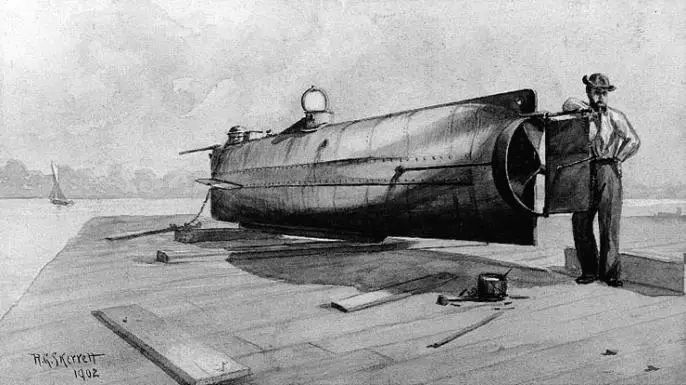
Type 206 Class Submarine
18 Type 206 submarines were built between 1969 and 1974 following the completion of Type 201 and Type 205 projects. Electronic sensors and infrastructure were prioritised in designing the platforms, which are the most successful boats in low-displacement submarine classes. It is aimed that the electrical current drawn by the electronic equipment and sensors, which increased with the technology, does not reduce the underwater cruising speed and range. Vessels are capable of launching wire-guided torpedoes and are equipped with the most advanced sonar and fire control systems of their time.
The platforms, which were designed considering the Baltic Sea conditions and the tactical requirements of the period, were developed from the Type 205s. Long-range patrol tasks in shallow waters and the prevention of maritime transport activities of the Eastern Bloc were determined as the mission definition during the possible conflict with the Warsaw Pact. Wear-resistant, non-magnetic material is preferred for the pressure hull and keel. Platforms constructed with 22-millimetre thick ST-52 type austenitic steel. This reduced the risk of triggering magnetic mines thanks to the preferred material. It is also known that this makes detection with the magnetic anomaly sensor difficult. Compared to its predecessors, the high strength and better elasticity of austenitic steel prevented the recurrence of structural problems experienced in Type 201 and Type 205 class platforms. Single-hull submarines have been developed with low exhaust emissions and high submerged speed concerns. In this way, it was recorded that Type 206 class submarines were able to infiltrate even the most protected aircraft carrier task groups without being detected during exercises and training.
The ships, whose construction activities were completed between 1969-1974, were able to carry 24 mines on an external structure. It is known that this attachment has a negative effect on underwater movement when loaded. The displacement of the submarines is 450 tons on the surface and 498 tons when submerged. The 48.6-meter-long boats are 4.6 meters wide. Single-propeller vessels can reach a 10 knots speed on the surface and 17 knots during diving and operate with a 22-men crew. Type 206s have eight torpedo tubes and can carry up to 16 mines.
The submarines, powered by an Asea Brown Boveri generator coupled to two 1,200-horsepower four-stroke MTU 12V 493 diesel engines, provide submerged condition propulsion using two Siemens electric motors. Two batteries, each consisting of 200 accumulators, provide an operational capacity of 228 nautical miles at a speed of 4 knots when submerged. 4,500 nautical miles range can be reached at 5 knots speed with 24 tons of fuel in the cisterns on the surface. The maximum operation depth of Type 206 submarines is 220 metres.
The ships" electronic equipment includes Thomson-CSF DUUX 2 passive range finding sonar, Safare VELOX intercept sonar, EDO-900 active mine avoidance sonar, and Thomson-CSF Calypso II surveillance and navigation radar. The ships" electronic warfare and decoy equipment consist of Thomson-CSF DR-2000U electronic support and Thorn-EMI SARIE systems. STN Atlas DBQS-21(CSU-83) Sonar was integrated into the platforms after 1990.
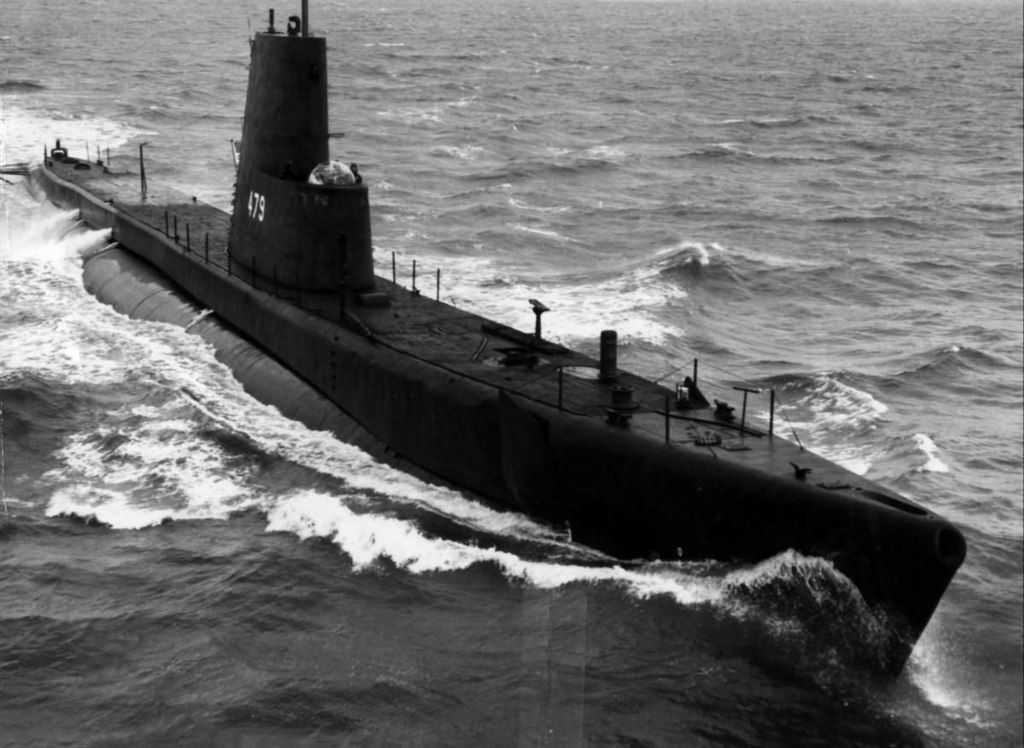
Submarines and Anti-Submarine Warfare Capabilities of Foreign Navies in the Region
Platforms of the Chinese, Sri Lankan and Bangladeshi Navy, especially Pakistan and India, sailing in the region. In addition, the area of responsibility of the U.S. Navy 7th Fleet includes the region.
In addition to the forces of the country, task groups belonging to NATO and the United Nations also conduct missions and exercises to combat piracy and maritime trade route security in the region from time to time. From time to time, there is information that ships from various Far East and European countries also carry out cruise activities in the region.
The biggest threat to Pakistan from these forces is seen as India. It is known that Islamabad has good relations with Beijing and Ankara. New Delhi has close contacts with Moscow, Washington and Tel Aviv. Although the Indian Navy is working to modernise its armed forces, it has been observed that the steps have been slow in some areas recently. It can be considered that the Indian Navy is suffering from low combat readiness rates, aircraft losses and occasional fires in naval vessels and that the personnel training level is fairly low to perform the difficult and dangerous tasks at sea fully.
The nuclear-capable Indian Navy consists of platforms assembled from different countries. In some vessels, it is possible to see radar, weapons, guided missiles and subsystems of Russian, American and Israeli origin simultaneously. A campaign called "Made in India" is also being carried out at the state level to localise the systems used in the country and the production/construction with Indian facilities.
The Indian Navy inventory includes nuclear submarines and diesel-electric propulsion submersible vessels. INS Arihant (S2), an Arihant-class nuclear submarine, is the first ship of the class developed in the country. There are six 533-millimetre torpedoes and 12 K-15 Sagarika submarine-launched ballistic missiles on the platforms, which are estimated to be tested at a test depth of 350 meters. Instead of the K-15s, four K-4s can also be transported on submarines. USHUS sonar developed by DRDO is integrated into Arihant, which has 6,000 tons of displacement.
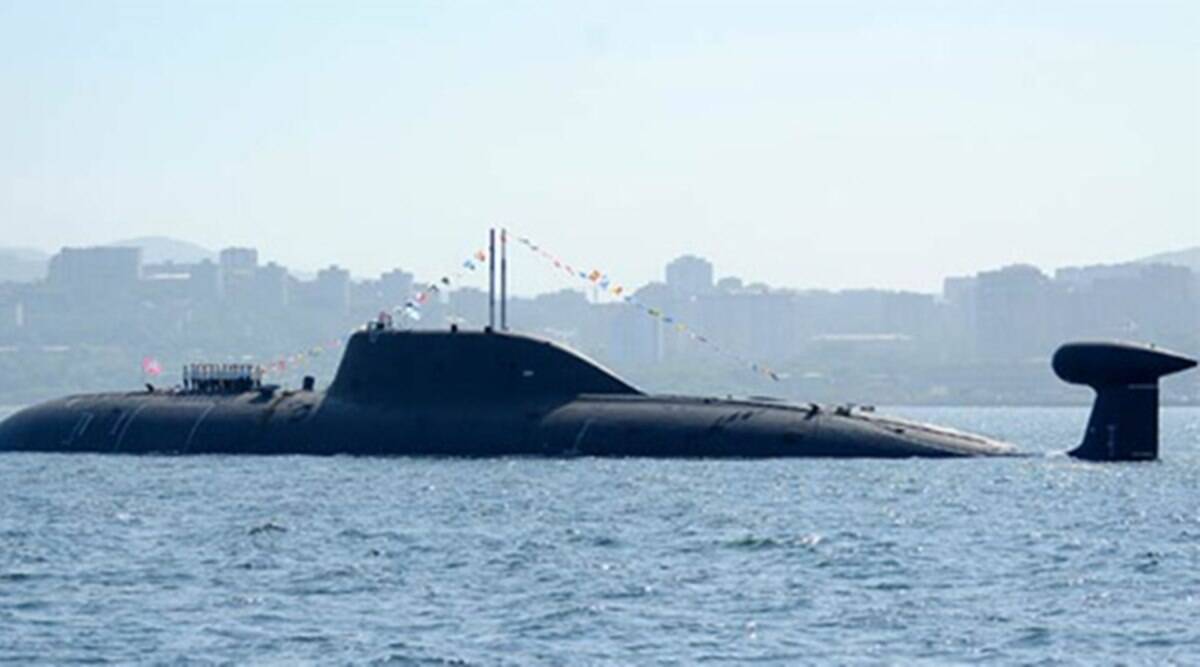
Using both the western and eastern platforms actively, India deploys three different classes of diesel-electric submarines in the regional waters.
Project 877 Paltus (NATO Code: Kilo) class submarines operate in the Indian Navy as the Sindhughosh Class. It is considered that seven of the submarines with a submerged displacement of 3,076 tons are currently on active duty. INS Sindhurakshak, also known as the Sindhughosh class, was damaged beyond repair in an explosion during maintenance in 2013. It is known that submarines, which can operate in the open sea for 45 days, can operate up to 350 meters beyond the safe depth of 240 meters. Vessels have six torpedo tubes supported with an automatic torpedo loading system that can carry 18 torpedoes, sea mines and cruise missiles. Submarines can reach 6,000 nautical miles range at 7 knots speed when submerged and can launch 91RE1 ammunition against enemy underwater targets. The platforms can be equipped with 9K32 Strela-2 and 9K34 Strela-3 air defence missiles.
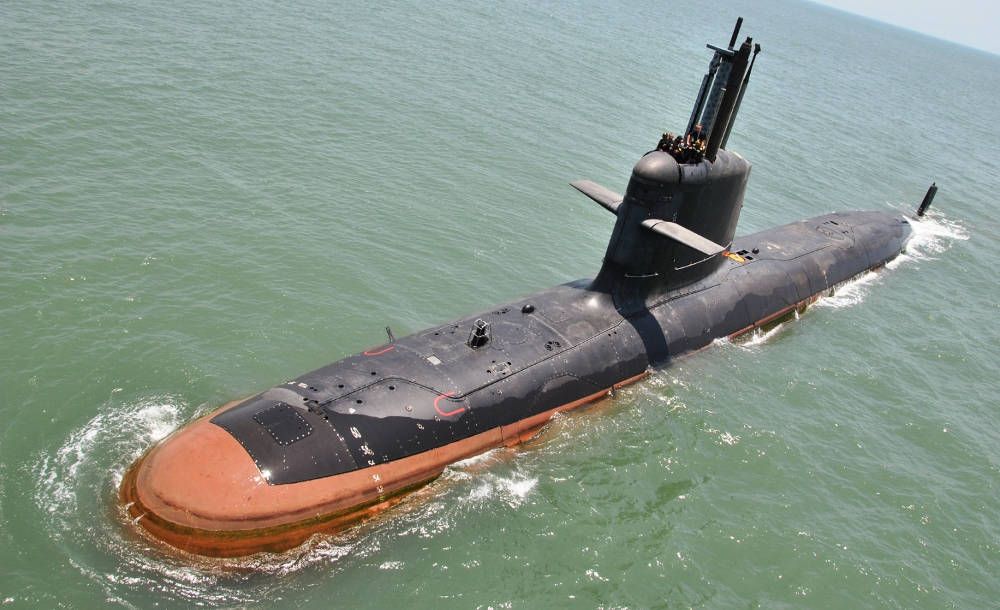
India has also agreed with France to supply submarines. Boats that the country offers to the international market as Scorpène Class submarines serve in the inventory of the Indian Navy under the Kalvari class name. HLES 80 steel has been preferred in the construction of platforms, which can be equipped with an air-independent propulsion system capable of submerged operation for a similar period of time, although not as much as nuclear submarines. AIP integration is planned to be integrated in the near future. It is known that the acoustic, infrared, magnetic, and electromagnetic signatures of the Kalvaris are quite low thanks to the design, structure and used materials. Submarines with a displacement of 1,775 tons, which can dive below 300 meters, can be operated with only 31 crew thanks to the advanced electronic infrastructure. There are six torpedo tubes on the vessels, and 18 torpedoes and SM39 Exocet anti-ship missiles can be carried. TSM 2233 Mk2 and TSM 2253 sonars are preferred for platforms. Able to reach a mission capacity of 6,400 nautical miles at 8 knots speed, Kalvaris can conduct patrol tasks in the open sea for up to 50 days. Four are on active duty, and two are under the construction and test phase of the six planned Kalvaris. Some of the platforms are known to be built in India under license.
The Indian Navy is actively using four Type 209/1500 class submarines that have achieved significant export success. Vehicles with a displacement of 1,850 tons, also known as the Shishumar Class, are equipped with DUUX-5 Fenellon sonar with 120 degrees scan angle, operating in the 2 to 15 kHz band. The Type 209/1500s, which can patrol for 50 days without resupply and refuel, can reach 13.000 kilometres range at 10 knots when submerged. Ships with eight torpedo tubes can carry 14 torpedoes. The Shishumars are also equipped with the CSU 83 and TSM 2272 sonars. Mid-Life Upgrade studies are on the table for vessels. Two boats are capable of launching the UGM-84 SubHarpoon.
There are two aircraft carriers in the inventory of the Indian Navy. It is known that anti-submarine warfare capable helicopters can be transported on platforms.
A Visakhapatnam Class destroyer with a displacement of 7,400 tons is in service in the inventory of the Indian Navy, which has a large surface fleet. With advanced low radar cross-section capability, the ship"s operational range can reach up to 7,400 kilometres at economical cruise speed. The top speed of vessels is 33.5 knots. HUMSA-NG active-passive sonar and Nagin active-phased array towed sonar are equipped on destroyers that can operate for 45 days without resupply. Equipped with two Maareech torpedo countermeasure systems, the ships also have four 533-millimetre torpedo tubes and two RBU-6000 anti-submarine warfare rocket systems. A hangar and helipad infrastructure is also suitable for operating two 10-ton class helicopters.
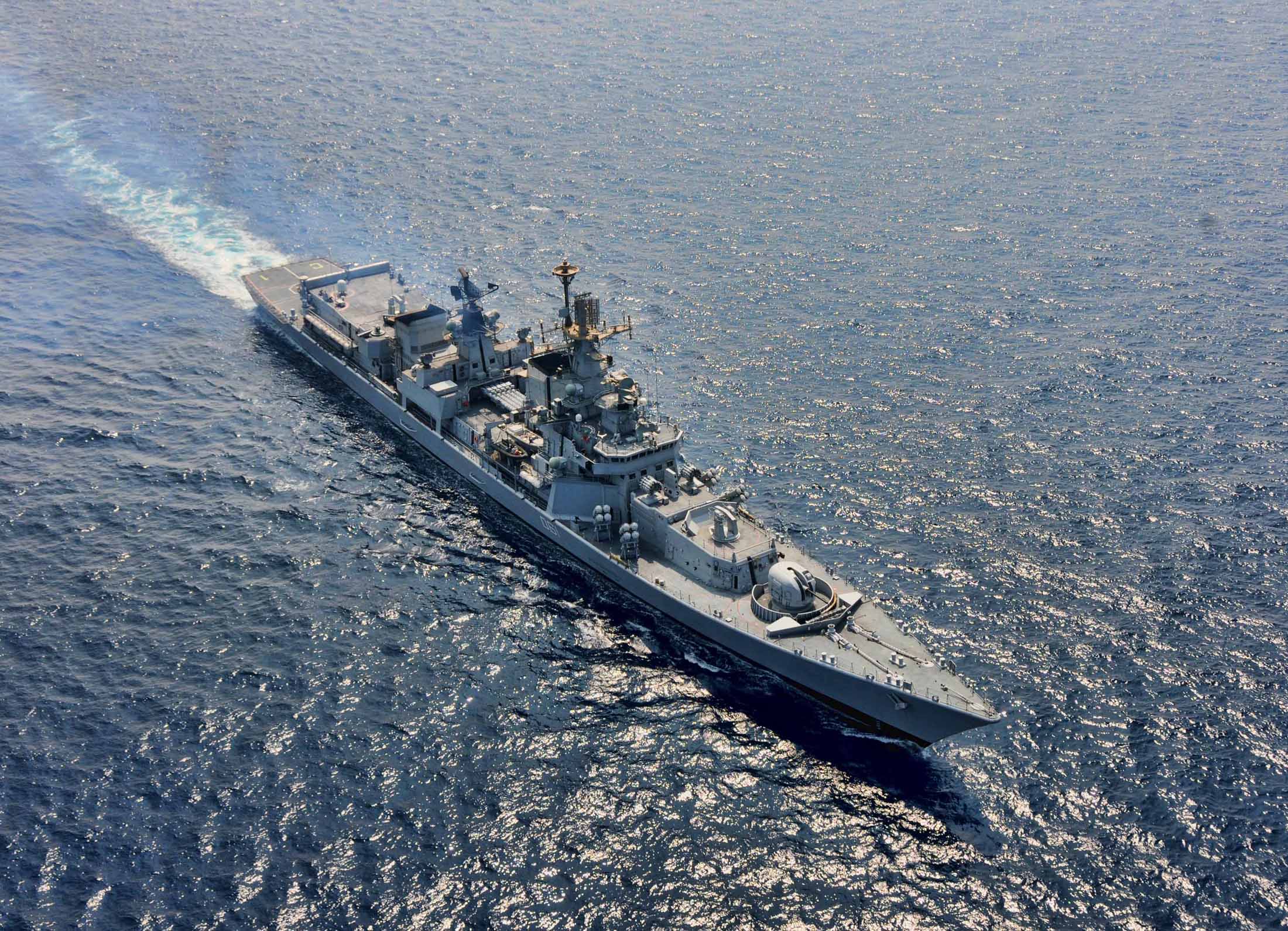
Three Kolkata Class guided missile destroyers are in service of the Indian inventory. Ships can reach 30 knots maximum speed and 11,000 kilometres at economical cruise speed. Destroyers are equipped with HUMSA-NG hull-mounted sonar and Nagin active phase array towed sonar. Kolkata Class platforms are fitted with two Maareech torpedo countermeasure systems, four 533-millimetre torpedo tubes, and two RBU-6000 anti-submarine warfare rockets. The ship has a helipad, and hangar infrastructure is suitable for operating two 10-ton class helicopters.
The Indian Navy has three Delhi Class destroyers with a displacement of 6,200 tons. The ships can reach 7,200 kilometres operating range at 18 knots economical cruise speed. Platforms using a towed countermeasure system have two RBU-6000 anti-submarine warfare rockets, a five-cell 533-millimetre torpedo tube, and two depth-charge racks and rail equipment. Destroyers are equipped with HUMVAD, HUMSA, ATAS and Model 15-750 sonar systems. It is known that one vessel was modernized for BrahMos integration.
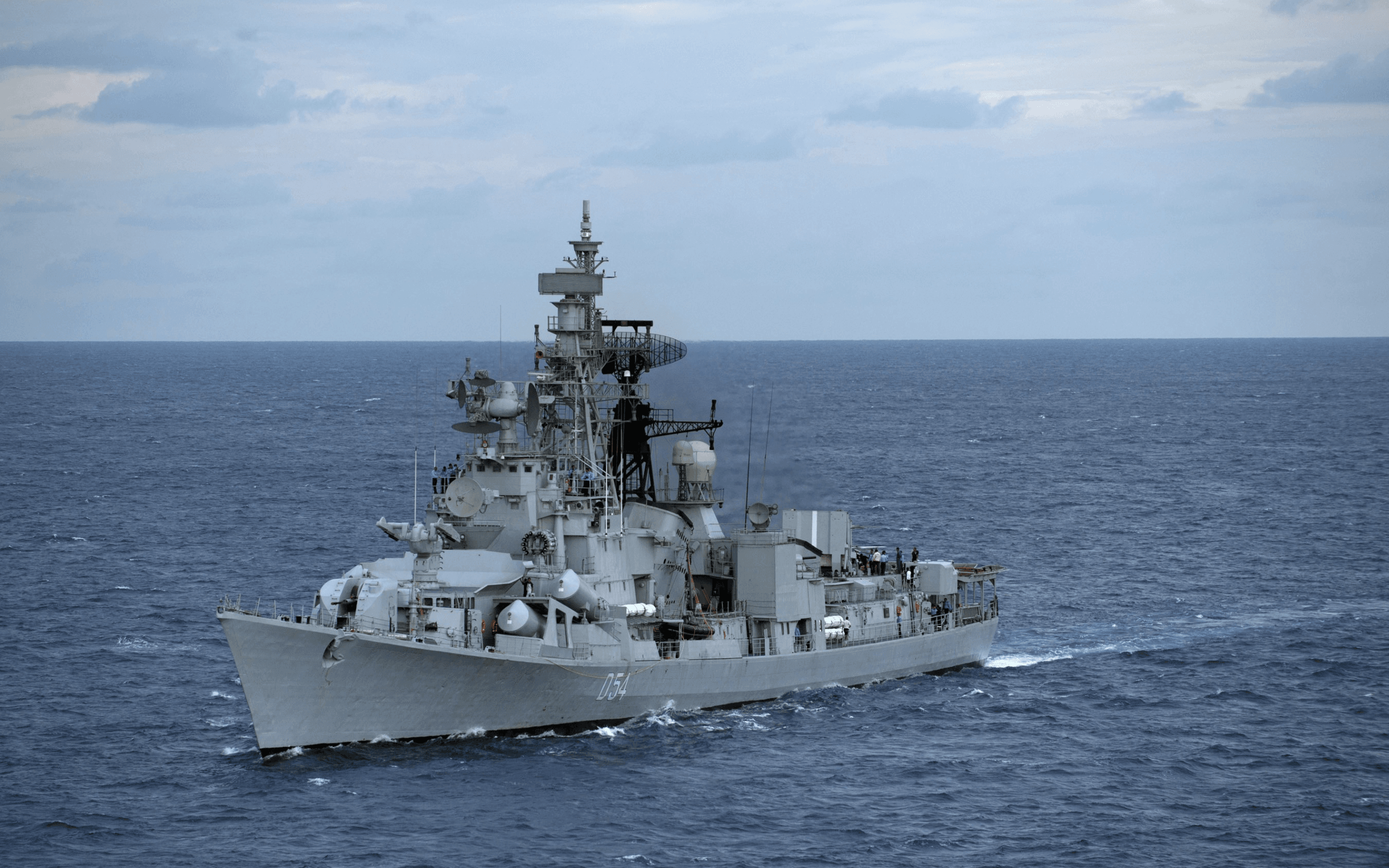
Adapted from Project 61 Kashin Class ships, Rajput Class destroyers have 4,975 tons displacement. A Bharat HUMSA hull-mounted sonar and MG-325 variable depth sonar serve the Eastern Naval Command. As a result of the modernizations, the standardization of the weapon load of the three platforms actively used has deteriorated. INS Ravinjay (D55) is adapted for anti-submarine warfare tasks. The destroyer has a quintuple 533-millimetre torpedo launcher and two RBU-6000 anti-submarine warfare rocket launchers. There is a hangar and helipad structure on the ships for the operation of one 10-ton class helicopter.
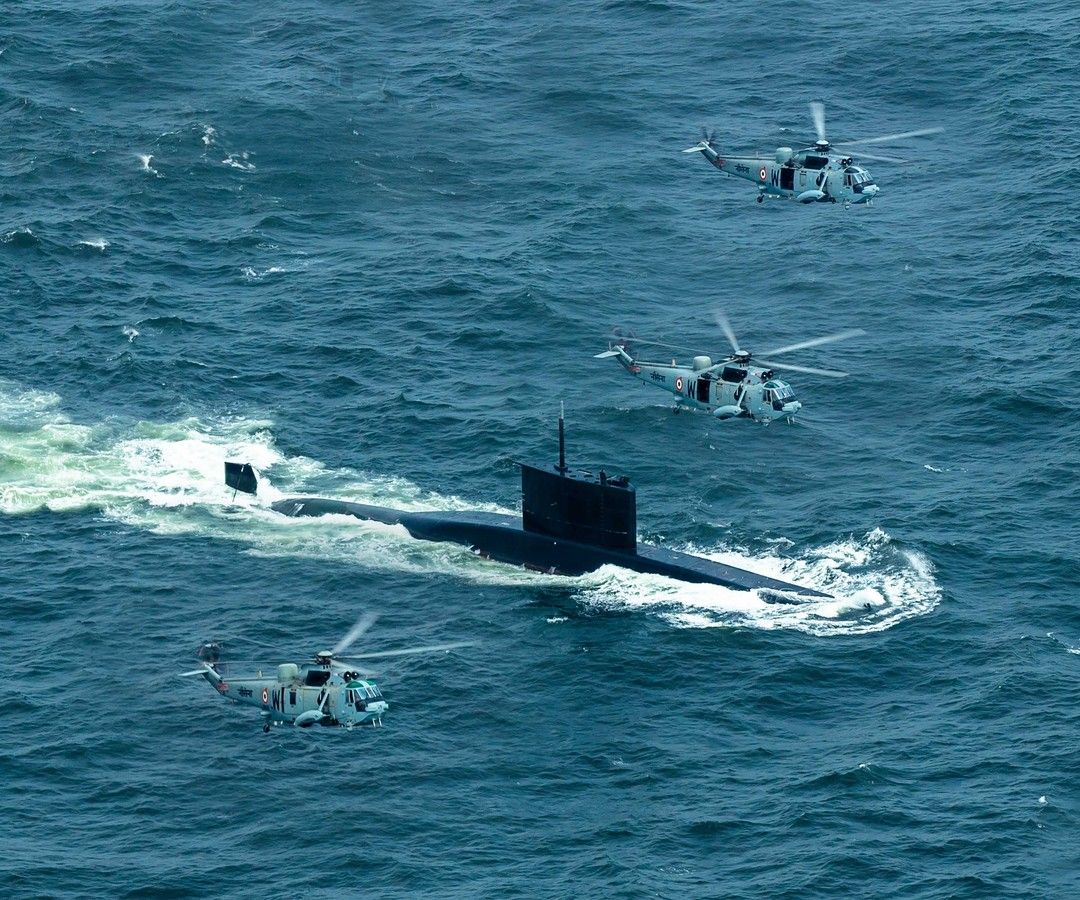
The Indian Navy is actively using three Shivalik class frigates, also known as Project 17 Class. Ships have more advanced stealth and land attack capabilities compared to Talwar Class ships and can also operate in CBRN environments. HUMSA-NG hull-mounted sonar and ATAS sonar systems are installed on the vessels, which can reach a range of approximately 8,300 kilometres at an economical speed. There are also two RBU-6000 anti-submarine warfare rockets on the 6,200-ton ships with two twin 324-millimetre torpedo tubes. The ships have helipad and hangar infrastructure for operating two 10-ton class helicopters.
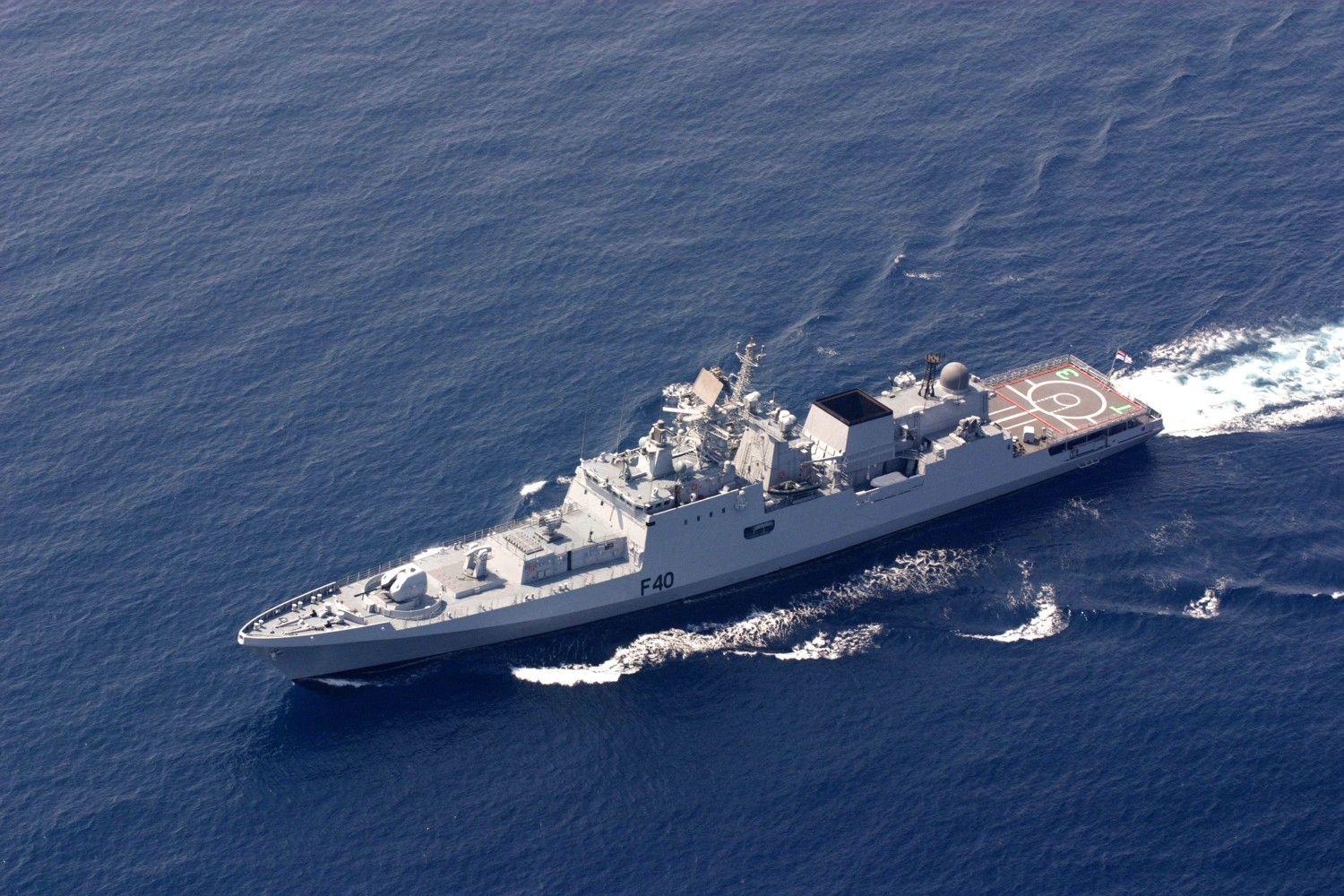
Six of the Talwar class frigates operating in the Indian Navy have a hull structure with a reduced radar cross-section. Also known as Project 1135.6, ships were developed with the experience gained from Krivak IIIs, the Project 1135 Burevestnik Class. A total of 10 frigates are planned to be built. Ships that can reach a 32 knots maximum speed operate for 30 days without replenishment. The operational range is 8,500 kilometres at 20 knots economic cruise speed. Vessels are equipped with APSOH and SSN-137 sonar systems. Ships with two dual 533-millimetre torpedo tubes are also equipped with an RBU-6000. A hangar and helipad infrastructure is suitable for operating a 10-ton class helicopter on platforms. The total displacement of ships is 4,400 tons.
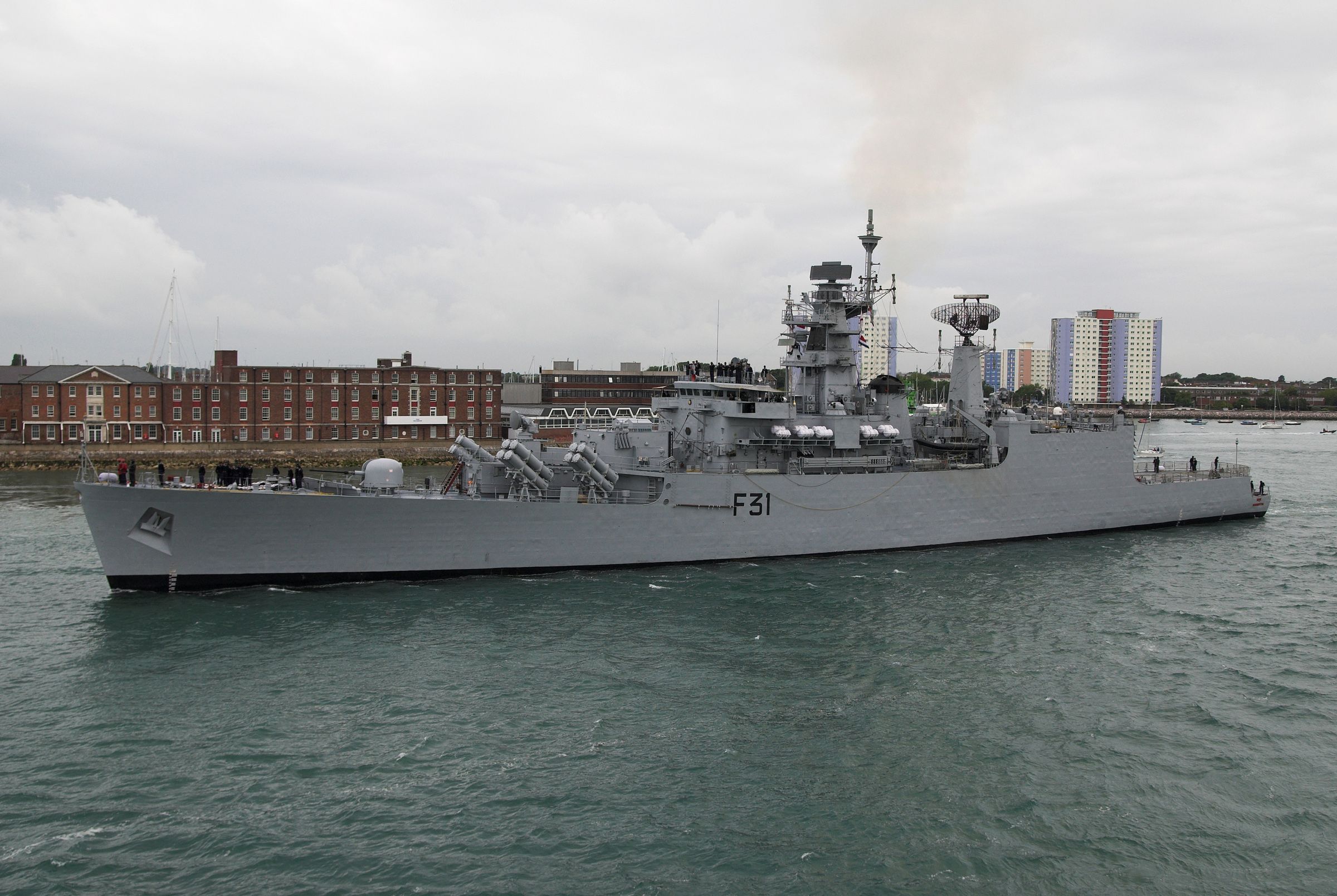
Three Brahmaputra Class frigates currently on active duty are also known as Project 16A. Platforms designed as guided missile frigates can reach 8,330 kilometres range at 12 knots speed. BEL HUMSA, hull-mounted radar, Thales Sintra towed sonar, and two Graesby G738 or BEL TOTED torpedo decoys integrated into 3,800-ton platforms. There are also two triple 324-millimetre torpedo tubes on the ships, with hangar and flight deck facilities suitable for operating two 10-ton class helicopters.
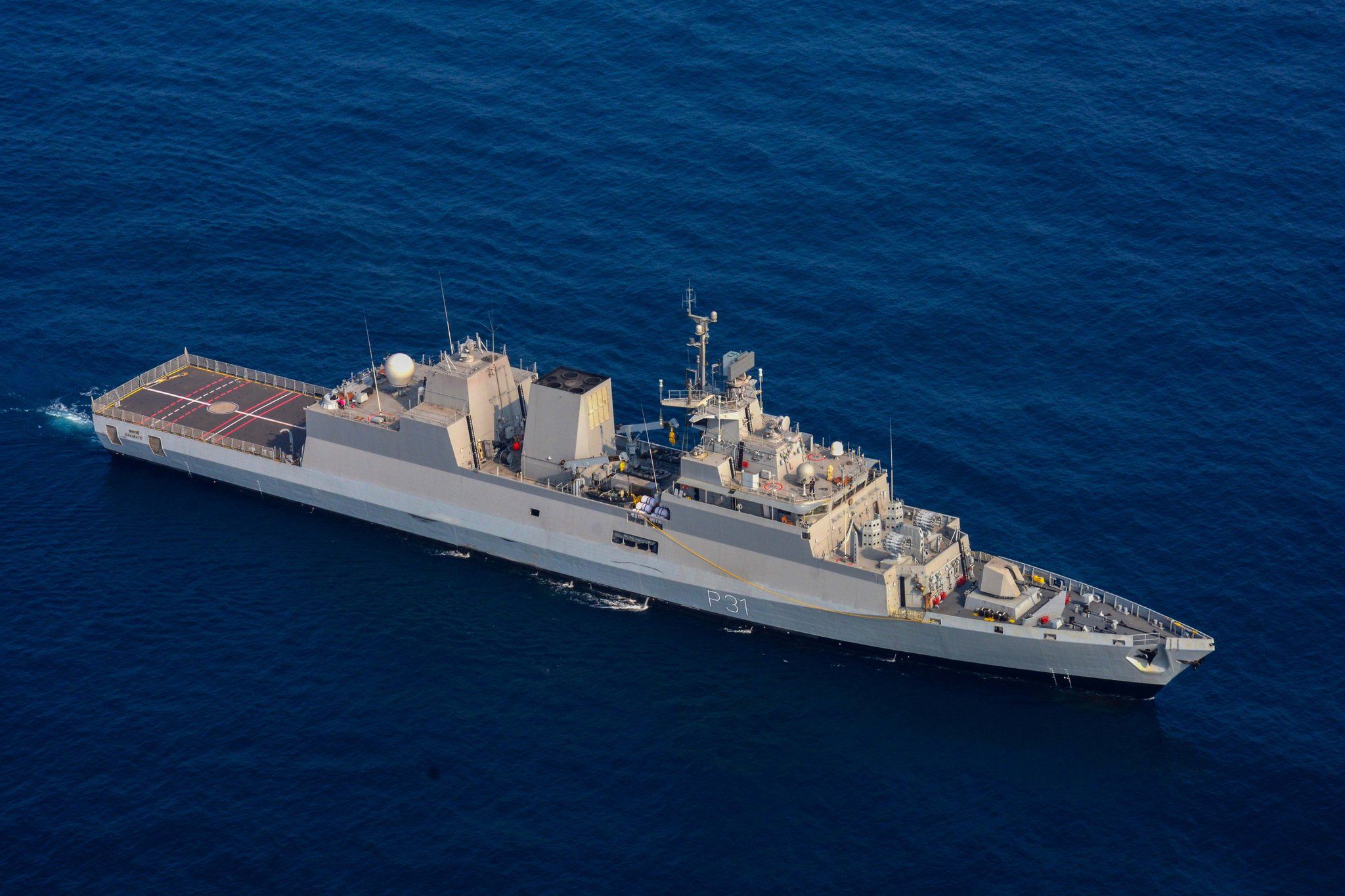
Indian Navy has developed Kamorta Class submarine anti-submarine warfare corvettes for submarine hunting missions in required regions and patrol in coastal waters, ensuring the security of critical facilities, ports or bases. The ships" acoustic signature and vibration levels have been reduced in addition to the reduced radar-cross section area. Ships with NPOL HUMSA hull-mounted sonar can operate in harsh sea conditions. There are also two RBU 6000 anti-submarine warfare rockets with 12 launchers in the 3,200-ton corvettes. Ships, which can reach a 7,400 kilometres range at 12 knots speed, have a helipad and hangar structure suitable for operating a 10-ton class helicopter. There is a towed torpedo decoy system on four active-duty platforms.
In addition to Korean and Khukri Class corvettes, the Indian Navy"s inventory includes Saryu and Sukanya class offshore patrol vessels. However, it is known that the platforms lack anti-submarine warfare capability and generally have the infrastructure suitable for the operation of 5-ton class helicopters.
Since this document focuses on anti-submarine warfare, the systems in question and other light-displacement patrol platforms are not included.
The Indian Navy has one of the most advanced maritime patrol aircraft fleets in the region.
Five Il-38 (NATO Code: May) and 11 P-8I Neptune aircraft are on active duty. Aircraft modernized to the Il-38SD standard in the early 2000s are equipped with the Novella P-38 system. The hardware can detect aircraft from 90 kilometres and surface targets from 320 kilometres. Aircraft gained the ability to track 32 targets simultaneously with the new aircraft. Platforms also perform ELINT missions as well as 12-hour patrol flights. It is known that planes can be equipped with various missiles, depth charges and torpedoes. Aircraft have MAD hardware and sonobuoy capability.
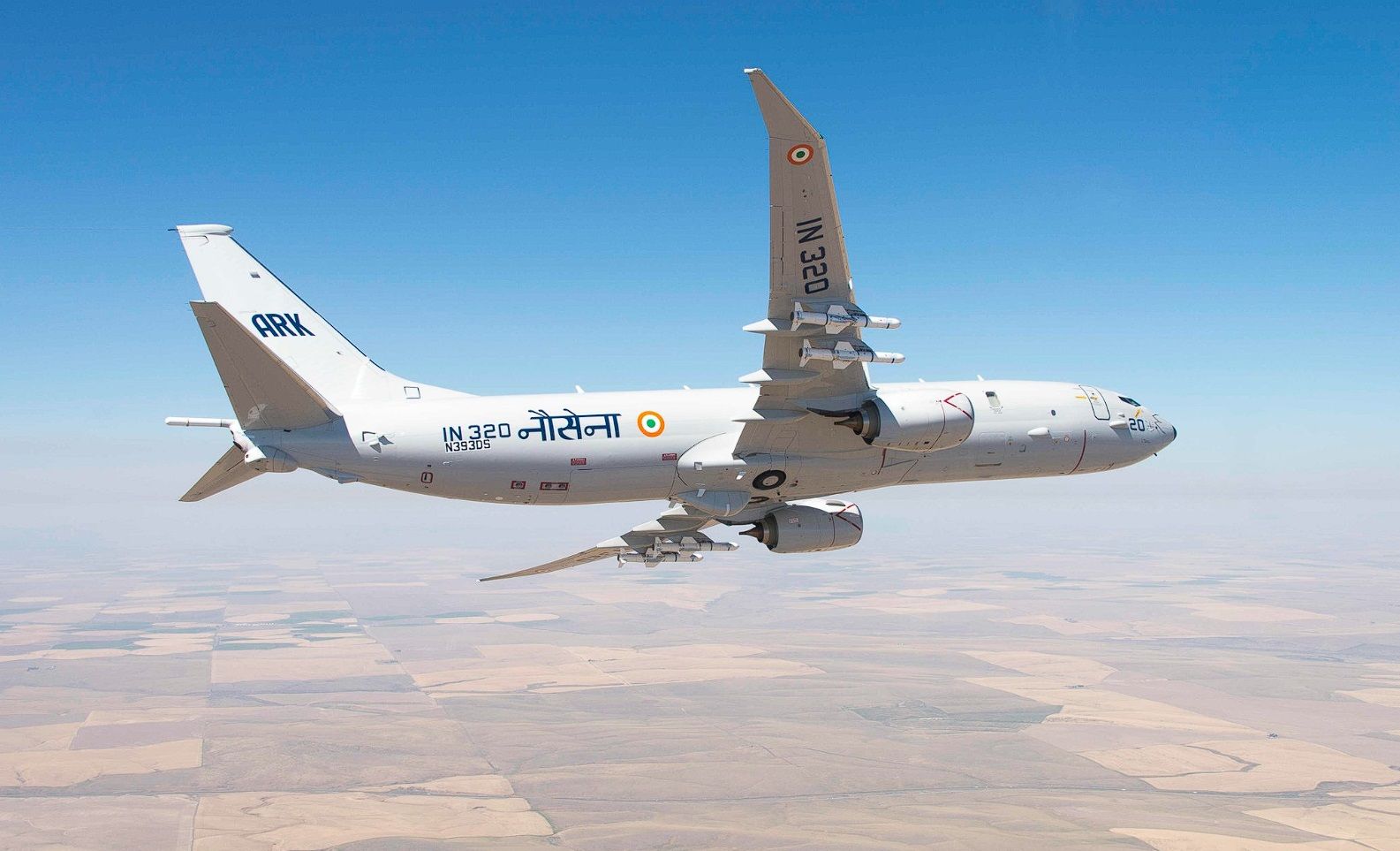
The United States paved the way for the balance in the region to deteriorate in favour of India by procuring the most advanced Western maritime patrol aircraft for the Indian Navy. The force, which took the P-8 Poseidons into its inventory under the name P-8I Neptune, gained the ability to detect 10 thousand square meters of RCS targets from a distance of 370 kilometres, even in Sea State 3. The radar can track 256 targets simultaneously, including the periscopes. P-8Is are equipped with MAD. Aircraft fitted with AN/APS-143 Ocean Eye Synthetic Aperture Radar (SAR) equipment. The system can detect a target with a 1 square metre area from a 370 kilometres range. Aircraft can carry various torpedoes, missiles and depth charges and can also use sonobuoys. Jet engine propulsion allows aircraft to scan much larger areas in shorter times. This provides a vital capability advantage to the Indian Navy in the region.
There are 12 Ka-28 (NATO Code: Helix) and 18 Sea King Mk42B anti-submarine warfare helicopters in the inventory of the Indian Navy. In addition, the Navy has an order for 24 MH-60R helicopters. In this way, the Indian Navy will certainly have a modern and advanced anti-submarine warfare capability.
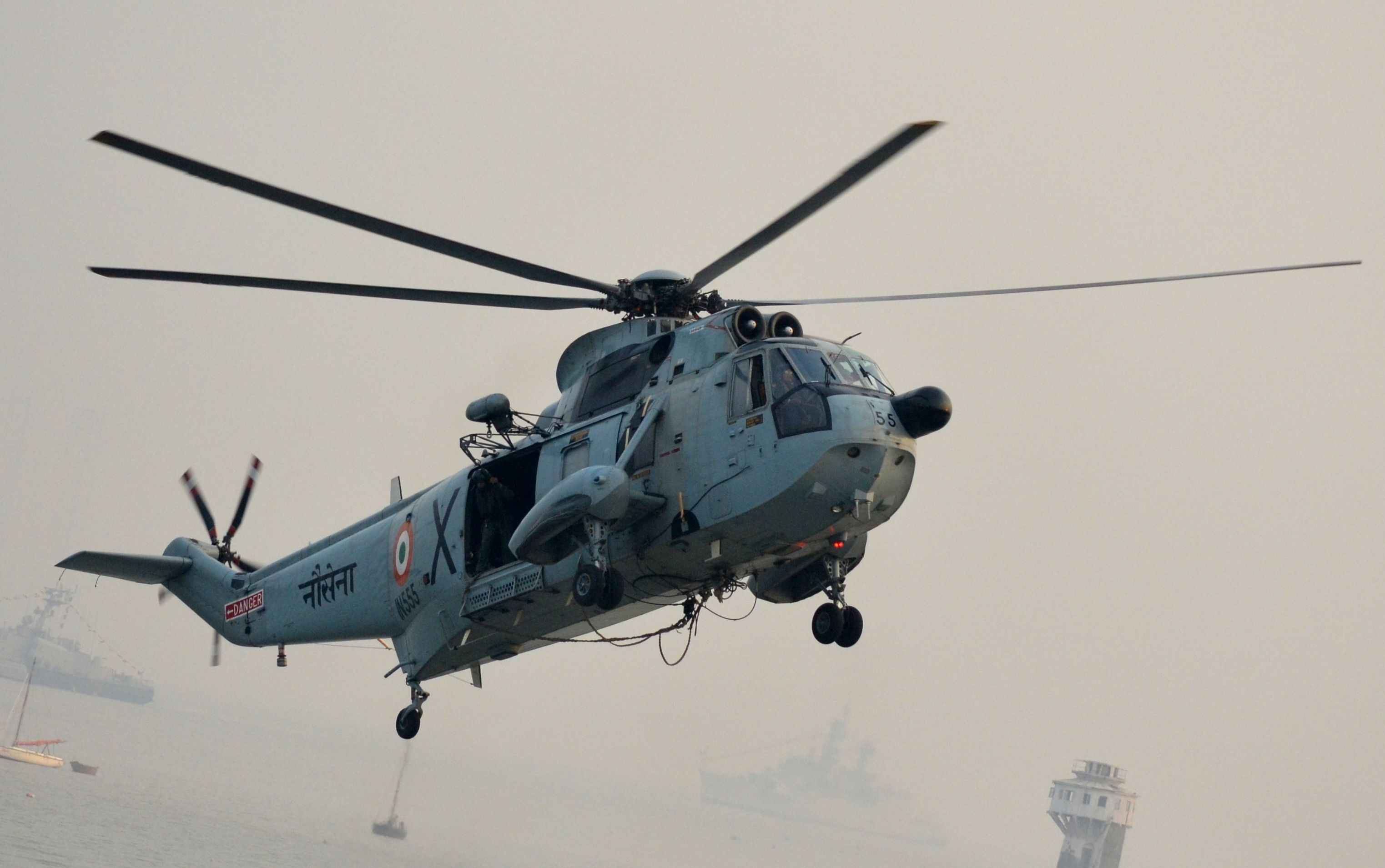
The document does not include other patrol aircraft and helicopters in the navy inventory due to their lack of anti-submarine warfare capabilities.
Another country in the region is Sri Lanka. The only ship with anti-submarine warfare capability in the country"s navy inventory is the SLNS Parakramabahu (P 625) platform. Two six-launcher Type 320 anti-submarine warfare rocket systems operate with a capacity of 36 rockets on the Type 053H2G class frigate. In addition, there are two depth-charge rails, six torpedo tubes and two 15-barrel Type 946/PJ-46 countermeasure rocket systems. The ship has a hangar and helipad structure suitable for operating one Z-9C five-ton class helicopter.
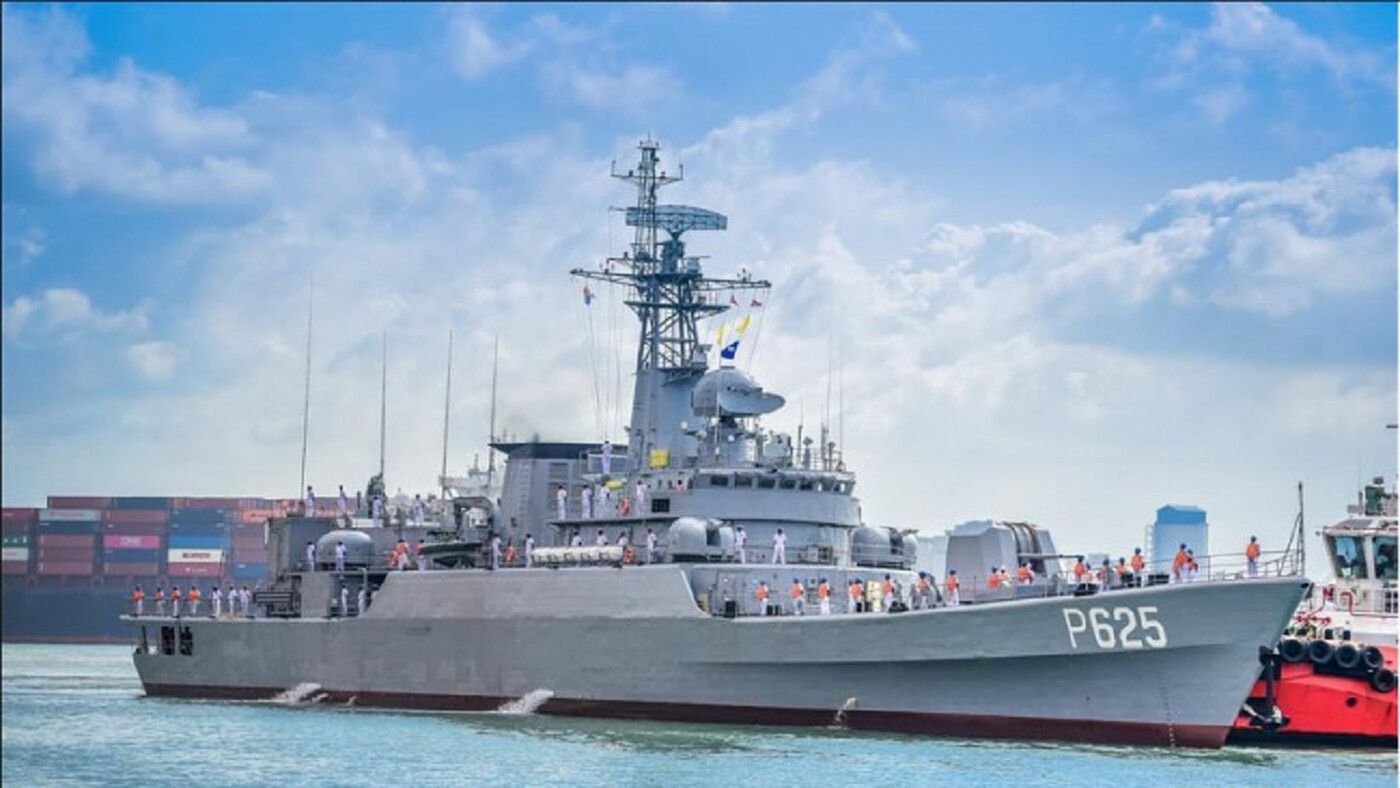
Although the Saryu, Hamilton and Sukanya Class ships in the Sri Lanka inventory have offshore patrol capability, vessels cannot conduct anti-submarine warfare operations.
Other surface platforms belonging to the country are not included in the document due to their lack of offshore navigation capability.
Another important actor in the region is Bangladesh. The Bangladesh Navy operates with limited capabilities.
Currently, two Type 035G Ming class submarines are in service in the country inventory. Platforms with a displacement of 2,110 tons are capable of anti-submarine warfare. Ships are equipped with Yu-3 torpedo and DUUX-5 sonar equivalent equipment. There are eight torpedo tubes and 14 spare torpedoes on the platforms operating at a depth of 300 meters.
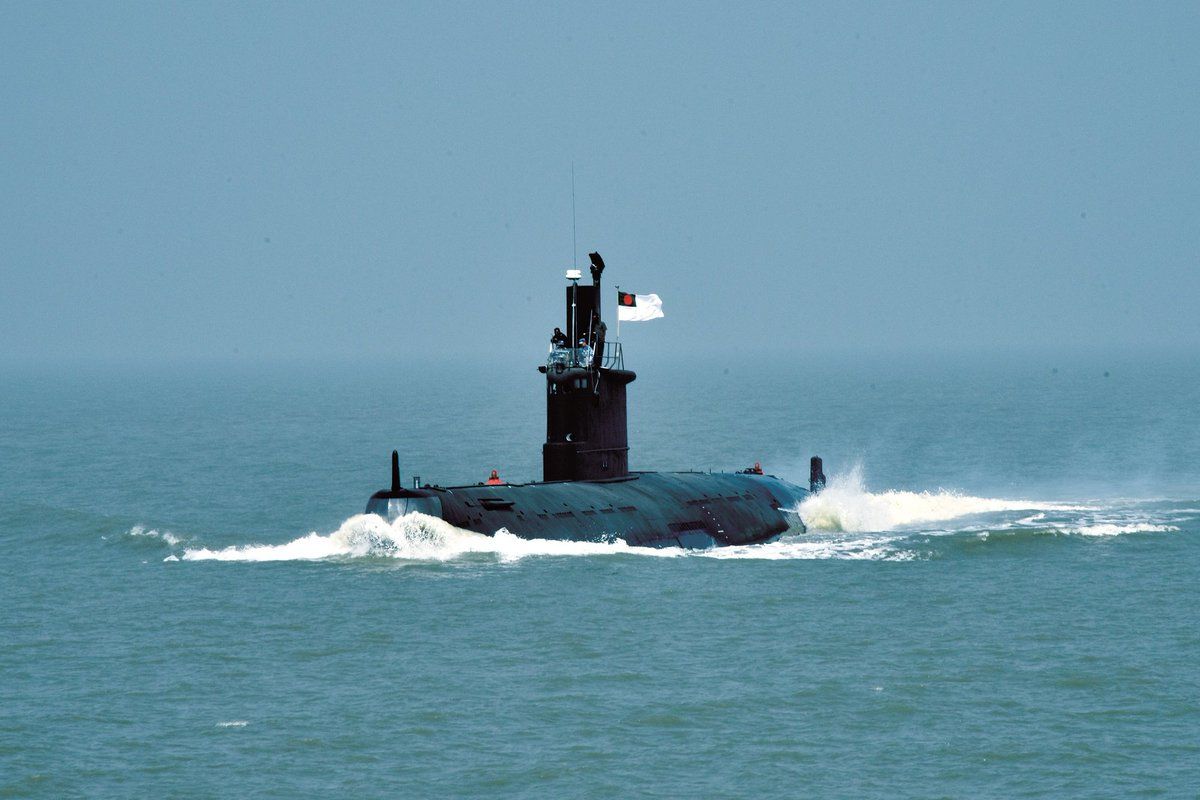
There is one frigate derived from Ulsan Class platforms in the country inventory. Ships with reduced radar-cross section area hull structure serving in the Bangladesh Navy inventory are the only ship with a gun and anti-submarine warfare capability. The frigate has two triple 324-millimetre torpedo launchers, two SLQ-261 acoustic countermeasure systems with 15 launchers, and ASO-90/DSQS-21 Mod sonar equipment. A five-ton class helicopter can be operated on the ship.
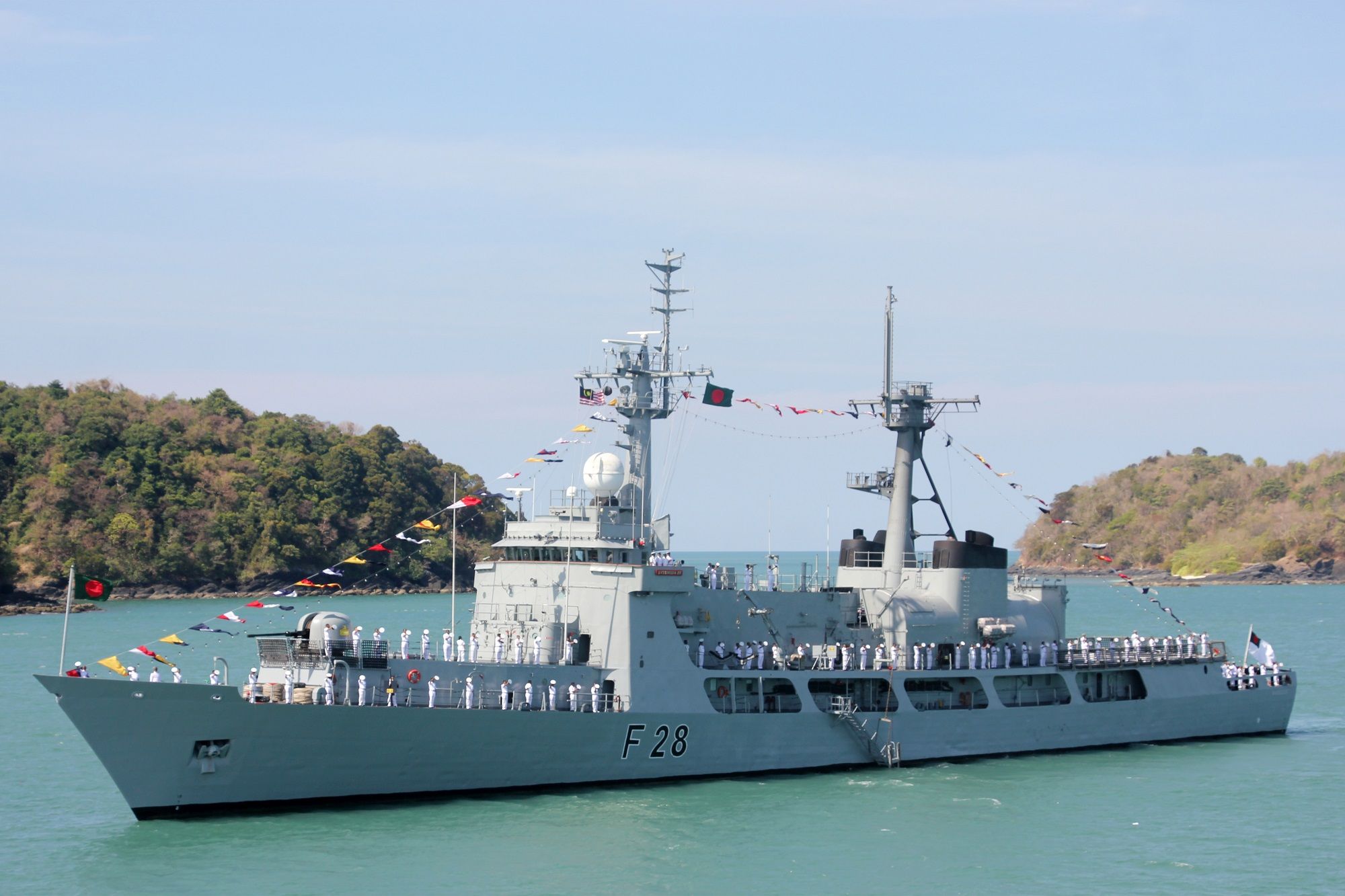
Two Type 053H3 class frigates serve in the Bangladesh Navy. Two six-launcher Type 3200 anti-submarine warfare rocket systems operate on the platforms with 36 projectiles. In addition, there are structures necessary for depth-charge release. Ships are equipped with Type 5 sonar. Platforms are known for their low-cost design.
Another frigate class in the Bangladesh inventory is known as Type 053H2s. Two platforms serve in the Navy. There are two five-launcher Type 65 anti-submarine warfare rocket systems, Type 5 sonar and decoy target launchers on the platforms.
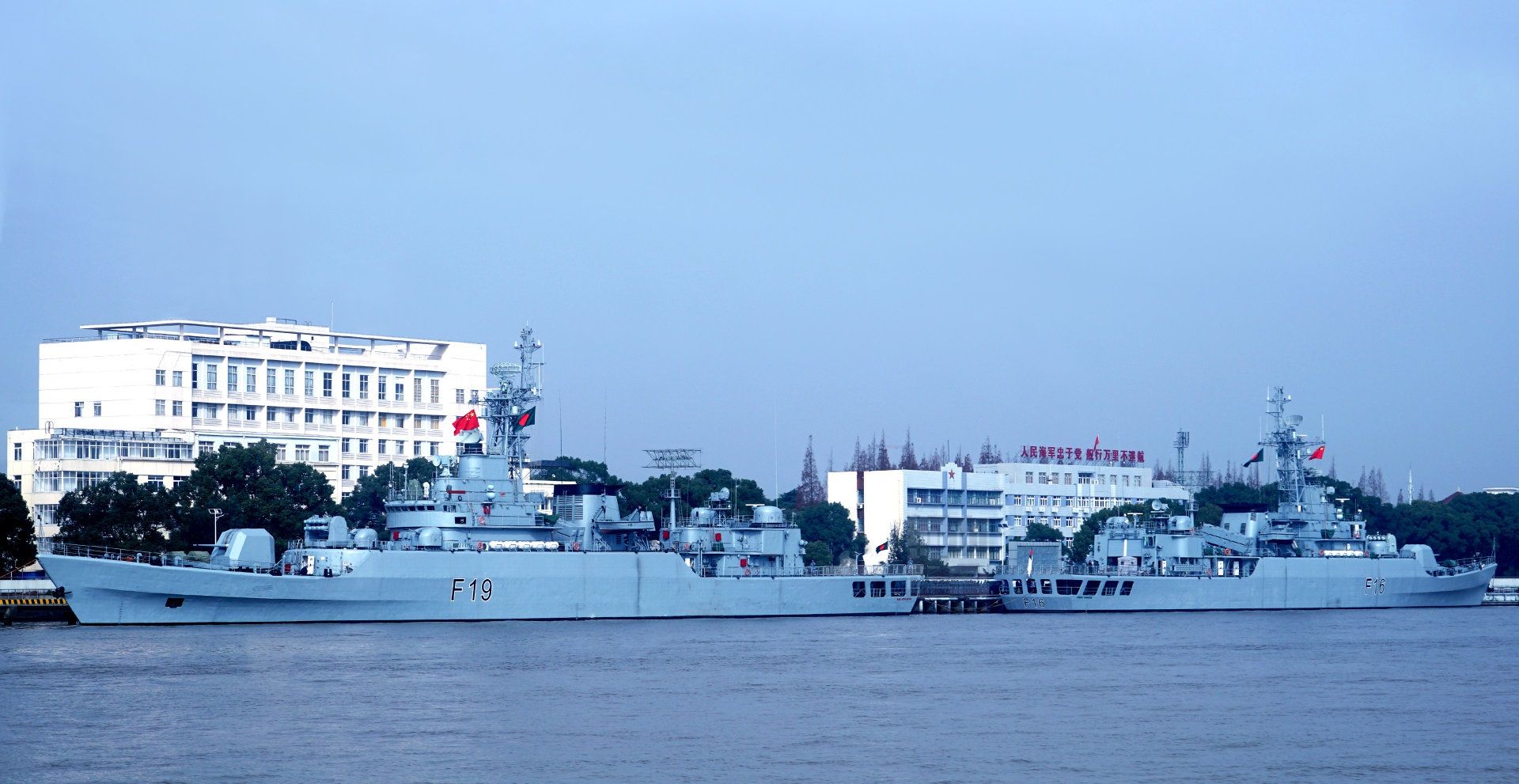
Bangladesh has started studies on a frigate with a displacement of more than 4,000 tons. It is planned to develop ships with anti-submarine warfare capability within the scope of Power Projection Target 2030. The construction of six vessels is on the table.
Type 056 class corvettes of Bangladesh lack anti-submarine warfare capability, sonar and torpedoes. Castle and Hamilton Class patrol ships do not have anti-submarine warfare capability.
Other low-displacement patrol vessels and boats are not included due to the document"s focus on underwater warfare.

